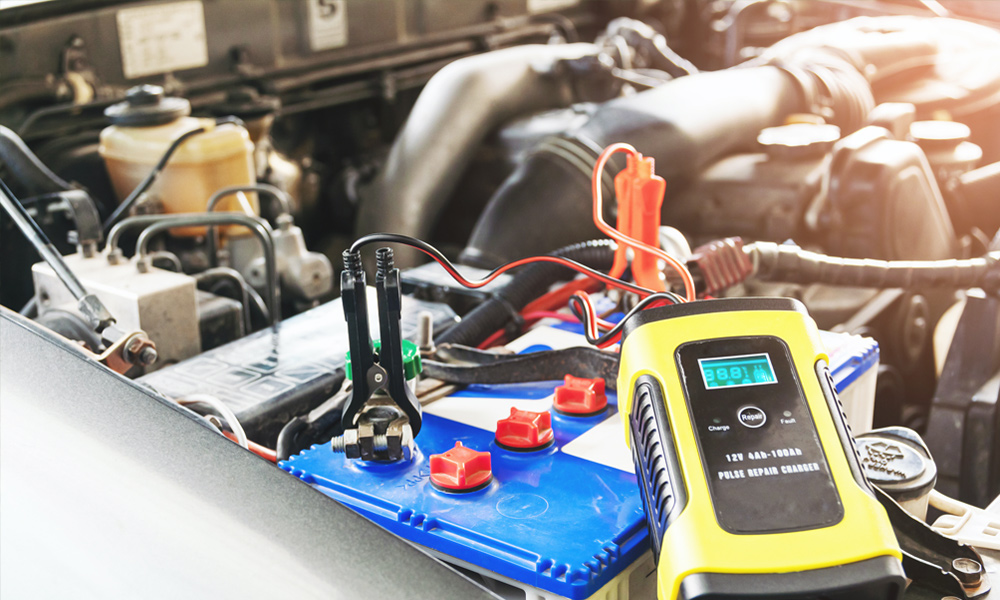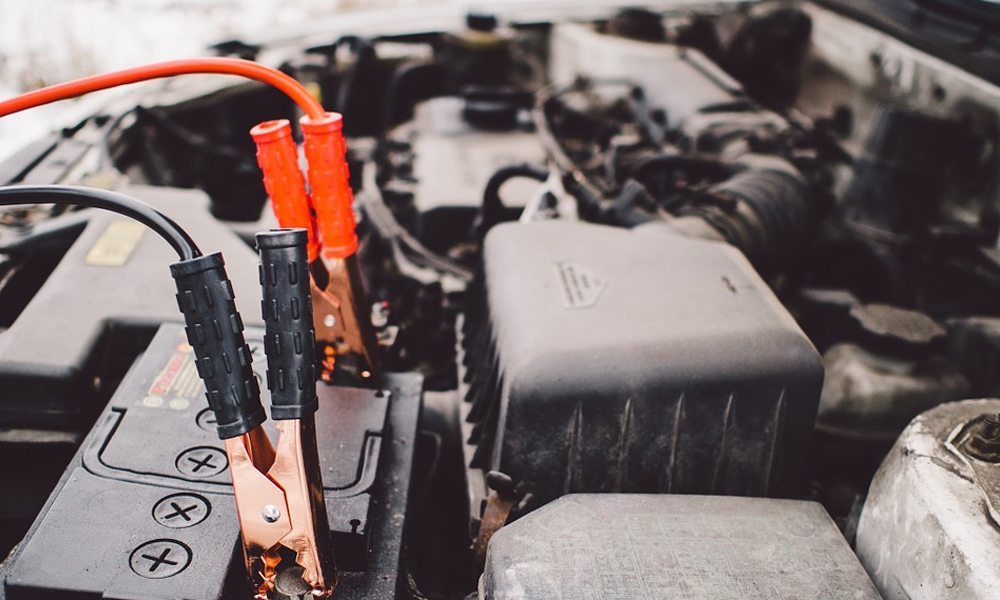How to use a Car Battery Charger?
 Having a dead battery is something that every car owner has experienced at least once in their life. If your car has been sitting for a while, or you’ve accidentally left the lights on, you’ll undoubtedly end up with a dead battery.
Having a dead battery is something that every car owner has experienced at least once in their life. If your car has been sitting for a while, or you’ve accidentally left the lights on, you’ll undoubtedly end up with a dead battery.
But, if you have a battery charger on hand, you can charge your battery easily and be back on the road in no time. Plus, it’ll save you a trip to the auto parts store for a new one! Here are step-by-step instructions on how to use a charger to charge a car battery.
How to Recharge your Car Battery Using a Portable Charger
Before attempting to charge the battery, check the electrolyte levels. The levels in your battery may be low and will need topping up. Always use distilled water for this. Take off each cell cap and fill it just above the tops of the plates.
Some batteries in new vehicles are completely sealed and, therefore, don’t need refilling. However, at this stage, you should also clean the battery terminals with a mixture of baking soda and water to get rid of any residue and battery acid.
If there’s a power point near your car, you can charge the battery while it’s still in the car. Otherwise, you’ll have to remove the battery before charging it. Before charging your battery, make sure that you’ve read the charger manual to understand how it works. Let’s get started.
Step 1 – Disconnect the Battery From the Alternator
Before connecting your charger, it’s important to disconnect the cables that connect the battery to your alternator. First, remove the negative clamp (which is black), and then remove the positive clamp (which is red). Disconnecting your battery from the alternator ensures that you won’t cause any damage while charging the battery.
Step 2 – Connect the Charger Cables to your Battery
To connect the battery charger to your battery, first, make sure that it’s unplugged from the power source. Then connect the positive cable of the charger (red) to the positive terminal. This should be marked with a plus (+) sign.
Then, attach the negative charger clamp (black) to the battery’s negative terminal. This will be marked with a minus (-) sign.
Step 3 – Select the Charging Current
Most chargers will have the option of selecting a “trickle” charge (2 amp) or a “quick” charge (10 amp). You may need to check the owner’s manual to see how to set this on your charger. It’s important to note that a trickle charge is much better for the health of your battery as a quick charge could damage it.
Step 4 – Plug the Charger into the Power Socket
Once you’ve connected the cables to the terminals on your battery, you can plug the charger into the power socket and turn it on. A green light will indicate that your battery is now charging.
Some battery chargers will have the option to select auto shut-off once the battery is charged. You can also choose whether you want the charger to run for a set amount of time. However, not all chargers will have this feature.
Step 5 – Disconnect the Charger Cables when the Battery is Charged
Once the battery is sufficiently charged, you can turn off the charger and disconnect it from the power socket. Then, disconnect the cables from your battery. Note that it’s imperative to shut off and unplug the charger before removing the cables from the battery. Otherwise, you could accidentally create a spark by touching the cables together.
Make sure you remove the negative cable from the battery post. Then, remove the positive red cable from the battery post too.
Step 6 – Reconnect the Alternator Cables to your Battery
Connect the positive red cable to the positive battery post and then attach the negative black cable to the negative terminal. Once you’ve followed the above process, start the car and run the engine to ensure that the battery is fully charged. It’s generally a good idea to take the vehicle for a quick run to make sure the car’s electrical system is working correctly. The alternator and engine should now take over from the charger.

How to Recharge a Car Battery Overnight
If you want to charge your car battery overnight, it’s a good idea to remove it from the car first. Then, follow the above process to attach the charger to the car battery. Select the “trickle” or “slow” charge mode and set the timer to turn off the charger once the battery is fully charged.
Bear in mind that you don’t want to do this too often because you might accidentally overcharge the battery. This will lead to a reduction in the life of the car battery in your vehicle.
Is it Possible to Jump-Start a Car With a Portable Charger?
Unfortunately, a car battery charger doesn’t provide enough amperage to kick over the starter motor. Therefore, you cannot use a car battery charger to jump-start a car with a dead car battery. Charging your battery is a much better solution.
Important Safety Precautions
- Always disconnect your car battery from the alternator before connecting the car battery charger.
- Always ensure that the car battery charger is disconnected from the power source before connecting or disconnecting the cables to your battery.
- Never touch the positive and negative battery cables together. This will create a spark that could ignite any gases that may have escaped from the battery.
- You should never overcharge car batteries, as the battery may explode if it has too much charge in it. Make sure that you’re not charging your battery for too long.
- Always consult the safety manual on how to use a car battery charger correctly and ensure that the voltage is correct for your particular battery.
Conclusion
Now you know exactly how to charge a car battery using a charger. If you follow these instructions, you should be back on the road again in no time.
Remember that batteries don’t like to sit idle for too long as they will lose their charge over time. Also, batteries that are exposed to cold or freezing temperatures may go flat. And, sometimes, your car’s electrical system could be pulling the charge out of your battery without you even being aware of it.